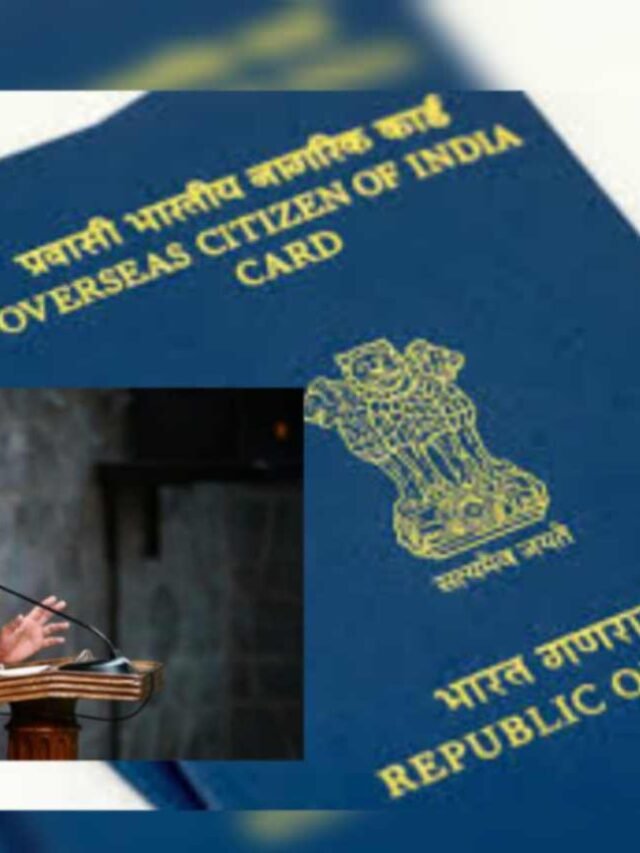Introduction of the Difference between judicial custody & police custody: – An individual is taken into custody after being arrested for any reason so that they can question them and conduct investigations. Let us understand the definitions of both in this article.
The term “custody” comes from the Latin word “custodia,” which means “to keep a watch or guard.” It means to detain someone for a specific reason, which could be to effectively prevent the person from breaking the law or to ensure a person’s safety. People frequently use the terms ‘arrest‘ and ‘custody‘ interchangeably.
However, there is a difference between the two. A person is apprehended if he is culpable of a felony or is suspected of committing offence, but custody refers to protecting someone or keeping him in a jail cell temporarily. After being detained, a person is arrested. As a result, we can conclude that every arrest includes custody but not vice-versa.
What does an arrest mean?
- A person’s freedom is only restricted when they are arrested.
- Furthermore, custody, in general, refers to care as well as protection, but in this context, the meaning of custody changes from care & safeguards to detention because it is immediately preceded by arrest.
There are 2 categories of custody
Police Custody
When a police officer arrests a suspect in order to prevent further offences and proceed with the investigation, the suspect is actually brought to the police station. This is known as police custody.
It is when a suspect is being detained by the police in the police station’s police lock-up. During this detention, which shouldn’t last more than 24 hrs, the investigating police officer may question the suspect.
Within 24 hours of being detained, the accused must appear before the magistrate. In this context, custody refers to a police lock-up. On a magistrate’s orders, a person may be held in police custody for 15 days in accordance with section 167 of the CrP.C.
Judicial Custody
The magistrate’s custody is generally referred to as judicial custody. The magistrate will decide whether to release the accused on bail, keep him in judicial custody, or return him to police custody.
Jail is referred to as custody when discussing judicial custody. There are 2 categories of prisons: Central and state. For serious or grievous offences with capital sanction, such as the death penalty, life in prison, etc., judicial custody may last up to 90 days, and it may last only 60 days for minor offenses.
Distinction between Section 167 & Section 309 CrPC
Section 167 of the Code addresses the custody of a person during the investigation of the case, which can be either judicial or police custody. This Sec. doesn’t apply to someone apprehended later in the investigation. Sec. 309, on the other hand, applies to custody when the court takes cognizance of the case, and the custody will be only judicial custody.
Section 167 of CrPC
Section 167 of the Code of Criminal Procedure (CrPC) deals with the procedure to be followed when an accused person is arrested without a warrant by the police and cannot be released on bail immediately. It outlines the rules for the detention and custody of the accused during the investigation stage.
Key points of Section 167 CrPC
Production before the Magistrate
When a person is arrested without a warrant, the police must produce the arrested person before the nearest Magistrate within 24 hours of the arrest. If the Magistrate is not available within that time, the accused can be taken to the nearest Judicial Magistrate.
Detention in Police Custody
The Magistrate has the power to authorize the detention of the accused in police custody for a period not exceeding 15 days in total. This custody period can be extended by an additional 15 days on the written approval of the Superintendent of Police, in certain serious offenses such as those punishable with death, life imprisonment, or imprisonment for a term exceeding ten years.
Remand to Judicial Custody
If the investigation cannot be completed within the police custody period, the accused shall be remanded to judicial custody by the Magistrate. Judicial custody means the accused will be kept in prison.
Bail Application
During the period of police custody, the accused can apply for bail before the Magistrate, and the Magistrate may grant bail if appropriate.
Female Accused and Juveniles
If the accused is a woman or a juvenile (a person below the age of 18 years), they cannot be detained in police custody and must be immediately placed in the custody of a welfare home or a juvenile home, respectively.
The provisions of Section 167 CrPC are essential for safeguarding the rights of the accused and ensuring that they are not subjected to undue or prolonged police custody without proper judicial oversight during the investigation stage of a criminal case.
Section 309 of CrPC
Section 309 of the Code of Criminal Procedure (CrPC) pertains to the power of the Court to postpone or adjourn the proceedings in a criminal trial. It lays down the circumstances under which the Court can grant adjournments and the general principle of conducting trials on a day-to-day basis to ensure a speedy and fair trial.
Key points of Section 309 CrPC
Power to Postpone Proceedings
The Court has the discretion to postpone or adjourn any inquiry, trial, or other proceedings in a criminal case if sufficient cause is shown. This means that the Court may grant an adjournment when there are valid reasons justifying the delay in the proceedings.
Discretion of the Court
The decision to grant an adjournment is entirely within the discretion of the presiding judge. The Court will consider the facts and circumstances of the case and the reasons presented by the parties seeking the adjournment.
Day-to-Day Trial
Notwithstanding the power to grant adjournments, Section 309 emphasizes that in trials of accused who are in custody, the Court should make an effort to hold the trial on a day-to-day basis. This is to ensure that the trial progresses expeditiously and that there are no unnecessary delays in completing the trial.
Exceptions for Adjournments
The Court should not grant adjournments lightly, particularly when the accused is in custody. However, there may be exceptional circumstances where the Court may allow an adjournment in the interest of justice.
The primary objective of Section 309 CrPC is to strike a balance between the right of the accused to a speedy trial and the need to accommodate legitimate reasons for adjournments to ensure a fair and just trial. It aims to prevent undue delays and procrastination in criminal proceedings while also allowing for reasonable adjournments when necessary.
In summary, Section 167 CrPC deals with the custody and detention of the accused during the investigation stage, while Section 309 CrPC deals with the power of the Court to grant adjournments and emphasizes the need for day-to-day trial, especially when the accused is in custody. Both sections play important roles in ensuring a fair and efficient criminal justice system.
Case Laws Regarding Police & Judicial Custody
CBI vs Anupam Kulkarni
According to subclause 2 of sec. 167 CrPC, the magistrate may order that the accused be held in whatsoever type of custody for a maximum of fifteen days. Therefore, the initial custody period shouldn’t last longer than fifteen days. Custody may be either police or judicial, as the magistrate considers appropriate.
CBI vs Rathin Dandapath
A police remand may be requested for a suspect who has been arrested, even after a charge sheet has been filed.
Gian Singh vs. the State of Delhi
Police may question an accused person while they are in judicial custody, but the magistrate has the authority to determine where and how the questioning will take place. Police interrogation would not alter the nature of custody.
Ram Sagar Yadav v. State of Uttar Pradesh
The magistrate should not issue a remand in a mechanical manner, but rather with consideration and good judgment.
Joginder Kumar v. State of U.P. (1994)
In this case, the Supreme Court of India laid down guidelines to prevent the abuse of police powers and protect the rights of arrested individuals. The court emphasized that an arrested person has certain rights, such as the right to know the grounds of arrest, the right to be informed about the right to legal counsel, and the right to be produced before a magistrate within 24 hours.
D.K. Basu v. State of West Bengal (1997)
This case focused on custodial torture and deaths. The Supreme Court issued guidelines to be followed by the police during the arrest and detention of individuals to prevent custodial abuse. The guidelines include the need for a memo of arrest, the right to inform a family member or friend about the arrest, and the right to have a medical examination after arrest.
Siddharth v. State of U.P 2021
The Supreme Court ruled that if a person complied with the investigation, it is not required to arrest and detain the accused of the crime while filing the charge sheet to the magistrate. It specified the circumstances under which the accused must be taken into custody:
- If a custodial investigation is to be conducted;
- In the case of heinous and severe crimes;
- If there is a probability that the suspect will threaten or cause injury to the witness; and
- He may flee.
Legal Recourse if Detention Is Unlawful
According to Articles 226 and 32 of the Indian Constitution, the person’s relative may file a case to the High Court or Supreme Court, respectively. It should be noted that if the accused is in custody, there is no legal recourse for the circumstance.
Conclusion
Influential suspects, such as politicians, are exempt from harsher interrogation techniques. Police are biased towards resourceful people due to the high level of corruption, while innocent people are tortured. Only the legal system, using its judicial brain and investigating the backgrounds of both the accused and the victims, can save such innocent people. Only then can the innocents be saved from being turned from good people into hardened criminals.
FREQUENTLY ASKED QUESTIONS
What is Section 167 of CrPC about?
Section 167 of CrPC deals with the procedure to be followed when an accused is arrested without a warrant and cannot be released on bail immediately. It outlines the rules for police custody and judicial custody of the accused during the investigation stage.
What is Section 309 of CrPC?
Section 309 of CrPC pertains to the power of the Court to postpone or adjourn the proceedings in a criminal trial. It allows the Court to grant adjournments based on valid reasons while emphasizing the need for a day-to-day trial for accused who are in custody.
What happens if the accused is not produced before the Magistrate within 24 hours under Section 167 CrPC?
If the accused is not produced before the Magistrate within 24 hours under Section 167 CrPC, it may amount to a violation of the person’s rights. In such cases, the Magistrate may take cognizance of the matter and inquire into the delay, and appropriate action may be taken against the concerned authorities.
What are the rights of an accused during police custody under Section 167?
An accused has the right to be informed of the grounds of arrest, the right to legal counsel, and the right to be produced before a Magistrate within 24 hours of arrest.

























